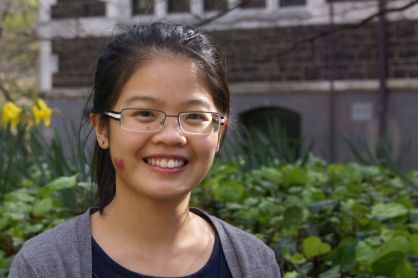Postdoctoral Research FellowFIET and Riddet Projects PhD (Otago), BSc Hons (Otago) |  |
ContactTel 479 3066 Ext 3066Email sze.leong@otago.ac.nz Location Gregory G01 |
About
Sze Ying Leong came to New Zealand from Malaysia in 2008 to undertake a Bachelor of Science (Honours) degree in Food Science, University of Otago. Her family background in the food manufacturing industry lead her to study food science, and it was the reputation of the Food Science Department at Otago that brought her here. The Food Science Department in Otago is well-known to equip our students with extensive knowledge of food chemistry, food processing and safety, food microbiology, food quality management, sensory analysis and new product development.
During her study at Otago, Sze was awarded with the New Zealand Institute of Food Science and Technology (NZIFST) Prize, Otago Medical Research Foundation (OMRF) – Food Technology Summer Scholarship, J Cowie Nichols Prize in Food Science and Bee Nilson Scholarships (link) in Human Nutrition and Food Science. After being awarded a first class honours degree, Sze continued with a PhD in our department researching the 'Feasibility of using Pulsed Electric Field processing (PEF) to increase phytochemicals in plants (wine grapes, cheries, carrots and wheatgrass shoots' under the supervision of Professor Indrawati Oey and Dr David Burrit (Botany).
Upon completion of her PhD research in 2016, Sze was awarded with a one-year research grant from the German Academic Exchange Service (Deutscher Akademischer Austauschdienst, DAAD). During her time at Germany, she worked at the Max Ruber-Institut Karlsruhe (Federal Research Institute of Nutrition and Food at Department of Safety and Quality of Fruit and Vegetables and Department of Food Technology and Bioprocess Engineering), focusing on food metabolomics analysis using comprehensive two-dimensional gas chromatography-mass spectrometry (GC×GC-MS) as an untargeted approach.
Sze returned to Otago and the Food Science Department in March 2017 as a post-doctoral researcher. She is particularly interested in how different post-harvest and food processing strategies could be used as tools to manipulate the quality and metabolite profiles of plant based foods.
Research
Research interests
- Food processing technologies (Pulsed Electric Fields, High Hydrostatic Pressure and other non-thermal technologies) and quality
- Effect of non-thermal technologies on plant microstructures
- Bioactive metabolites and their health-promoting functionalities
- Food quality-related enzymes
- Postharvest and quality
- Oxidative stress and redox biology
- Food metabolomics analyses
Publications
Leong, S. Y., Burritt, D. J., Hocquel, A., Penberthy, A., & Oey, I. (2017). The relationship between the anthocyanin and vitamin C contents of red-fleshed sweet cherries and the ability of fruit digests to reduce hydrogen peroxide-induced oxidative stress in Caco-2 cells. Food Chemistry, 227, 404-412. doi: 10.1016/j.foodchem.2017.01.110
Leong, S. Y., Burritt, D. J., & Oey, I. (2016). Effect of combining pulsed electric fields with maceration time on Merlot grapes in protecting Caco-2 cells from oxidative stress. Food & Bioprocess Technology, 9(1), 147-160. doi: 10.1007/s11947-015-1604-y
Leong, S. Y., Burritt, D. J., & Oey, I. (2016). Electropriming of wheatgrass seeds using pulsed electric fields enhances antioxidant metabolism and the bioprotective capacity of wheatgrass shoots. Scientific Reports, 6, 25306. doi: 10.1038/srep25306
Leong, S. Y., Oey, I., & Burritt, D. J. (2016). Pulsed electric field improves the bioprotective capacity of purées for different coloured carrot cultivars against H2O2-induced oxidative damage. Food Chemistry, 196, 654-664. doi: 10.1016/j.foodchem.2015.09.104
Leong, S. Y., Richter, L.-K., Knorr, D., & Oey, I. (2014). Feasibility of using pulsed electric field processing to inactivate enzymes and reduce the cutting force of carrot (Daucus carota var. Nantes). Innovative Food Science & Emerging Technologies, 26, 159-167. doi: 10.1016/j.ifset.2014.04.004
